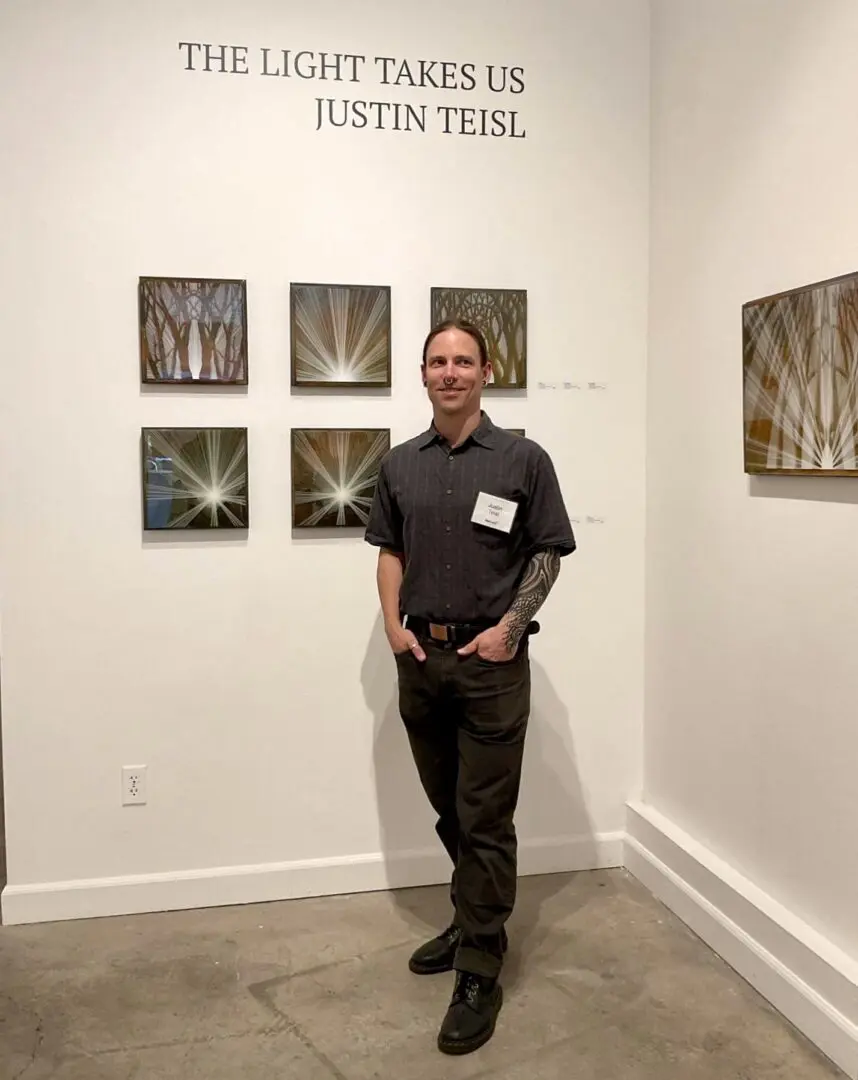
It’s always felt intuitive to me that when given the option, there are advantages to doing things the hard or the slow way: taking stairs instead of an escalator has clear health benefits, brewing a pour-over coffee by hand should yield a better tasting cup than what a drip machine makes, and walking, cycling, or using public transit is better for the environment than driving a car. Of course this is far from a rule and humans are constantly finding ways to produce positive results while saving a lot of time, money, and energy. But in my mind there is always that push to favor the hard way over the easy way- in small moments and large- if there may be a payoff for doing so. As I look back at the directions I’ve taken my artwork over the years, it’s clear that this mindset has guided many of my decisions. It has helped me commit to making very detailed compositions that are time consuming to paint: a less detailed image would be quicker to make but not as satisfying or impressive to look at. It has helped me continue to fine tune the surfaces of my paintings: I have almost always painted not on pre-bought canvases or pre-assembled cradled boards, but on straight plywood, which necessitates extra work for me, and over the years I’ve added steps to this extra work. For example, I now build and paint frames for each painting and fix them directly to that plywood, then seal the frame to the artwork beneath multiple coats of resin, a group of tasks that I used to do perfectly fine without, but now find necessary and beneficial- as well as difficult and time consuming. But the characteristic of my art that I want to focus on here is its subtle three dimensionality, and the benefits and the drawbacks that accompany this important part of my artistic vision.
A quick description of the process, for those who haven’t seen my work in person: In my mixed media paintings I build up surfaces that are multiple centimeters thick on top of plywood. I start with abstract swirling colors as background and seal that off with a clear coat of resin, and then begin to create my images across a handful of layers of paint, each separated by a layer of clear resin that is several millimeters thick. As I apply paint to create the image (a landscape), I am rendering the negative space of the image- painting the sky that is seen between trees and branches and leaves to reveal those trees. When seen in person close up, the viewer can see the distance between layers, especially that first background layer and the top image layer, and appreciate that the paint making up the trees (or mountains) is farther away from them than the paint that makes up the light sky. Additionally, the rays of light that I paint on several different layers almost vibrate as the viewer subtly moves their head while looking at the paintings. This subtle parallax effect has been one of the most interesting elements of my work to me lately, and unfortunately it’s one that gets eliminated when my work is photographed.
The necessity of sharing and viewing artwork through photographs shared online is undeniable, and as I’ve developed my artwork to increasingly explore the bit of space above the plywood on which I paint I’ve been aware of how much harder I’m making things for myself. It’s difficult for viewers, including potential collectors and exhibitors, to fully appreciate work whose most distinguishing feature doesn’t translate to photographs but relies on being seen and explored in person. I’ve been following my artistic instincts and visions first and foremost, knowing that the payoff is within the physical work that I’m making, yet also knowing that in person is the least common viewing experience. And so the question remains: is it beneficial for me to continue to explore the three dimensional possibilities within my painting practice, when it is certainly more work for me and only some viewers will experience the painting the way it’s best appreciated?
As I’ve suggested, my instinctual answer to that question is a firm yes. I feel it’s best to reward my own curiosities and ambitions by making the most interesting artwork that I can, and to reward the viewers who do make the trip to experience art in person. My wish is for these viewers to feel like they’re looking at a painting that is alive in a way that a purely two dimensional image can’t be, to feel like the viewing of these paintings is an experience that was worth the trip to the gallery, that being in a room surrounded by art is a reward and a privilege in itself- just as having the time and energy to make art is also a privilege. I’ll continue to make compositions that also work well when photographed (after all I do put a lot of energy into making compositions that I find interesting as pure two dimensional images), and know that the in person viewers are getting a treat that is not available to everyone.
The Light Takes Us is on view at Mercury 20 Gallery through June 10.